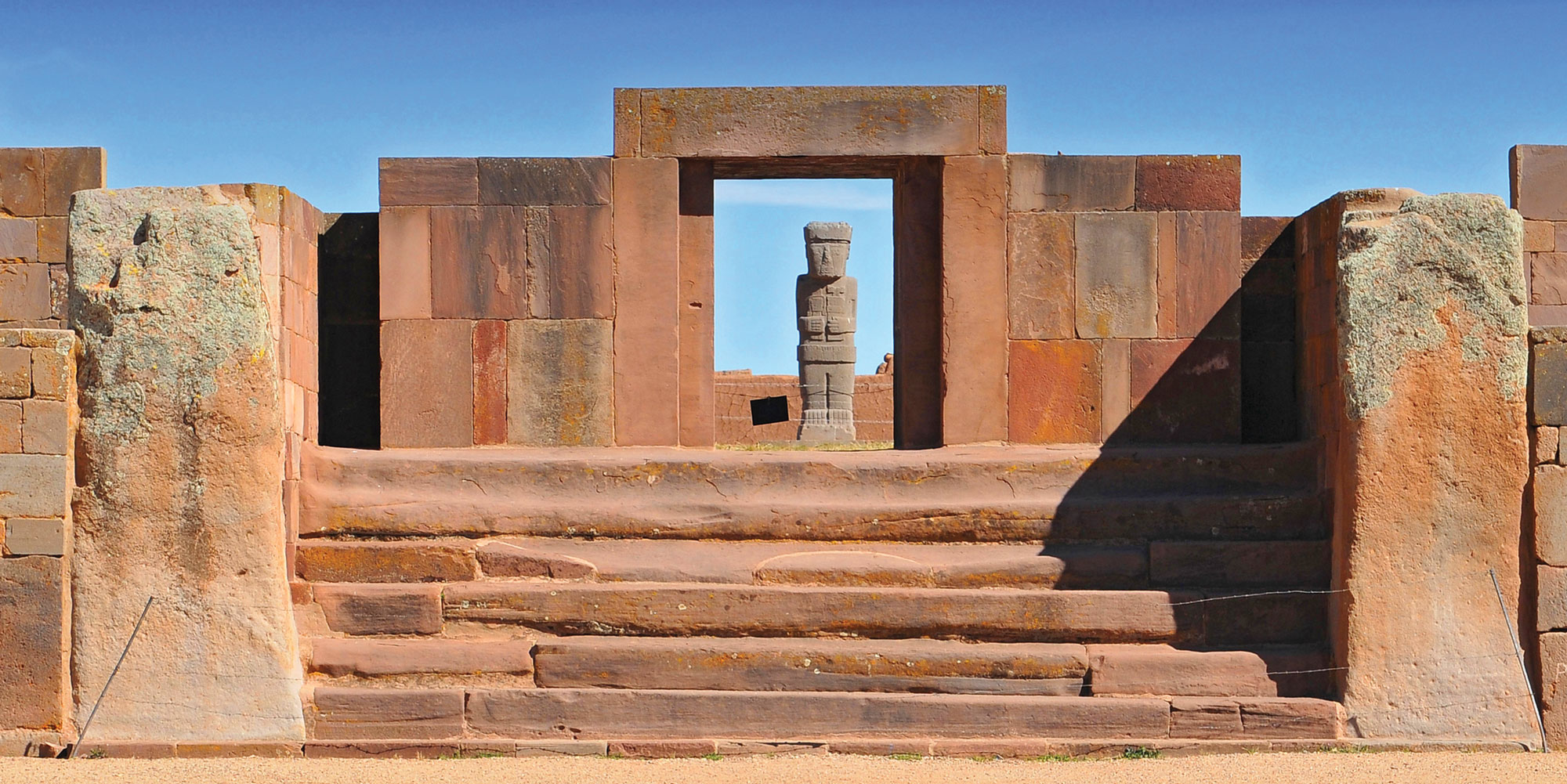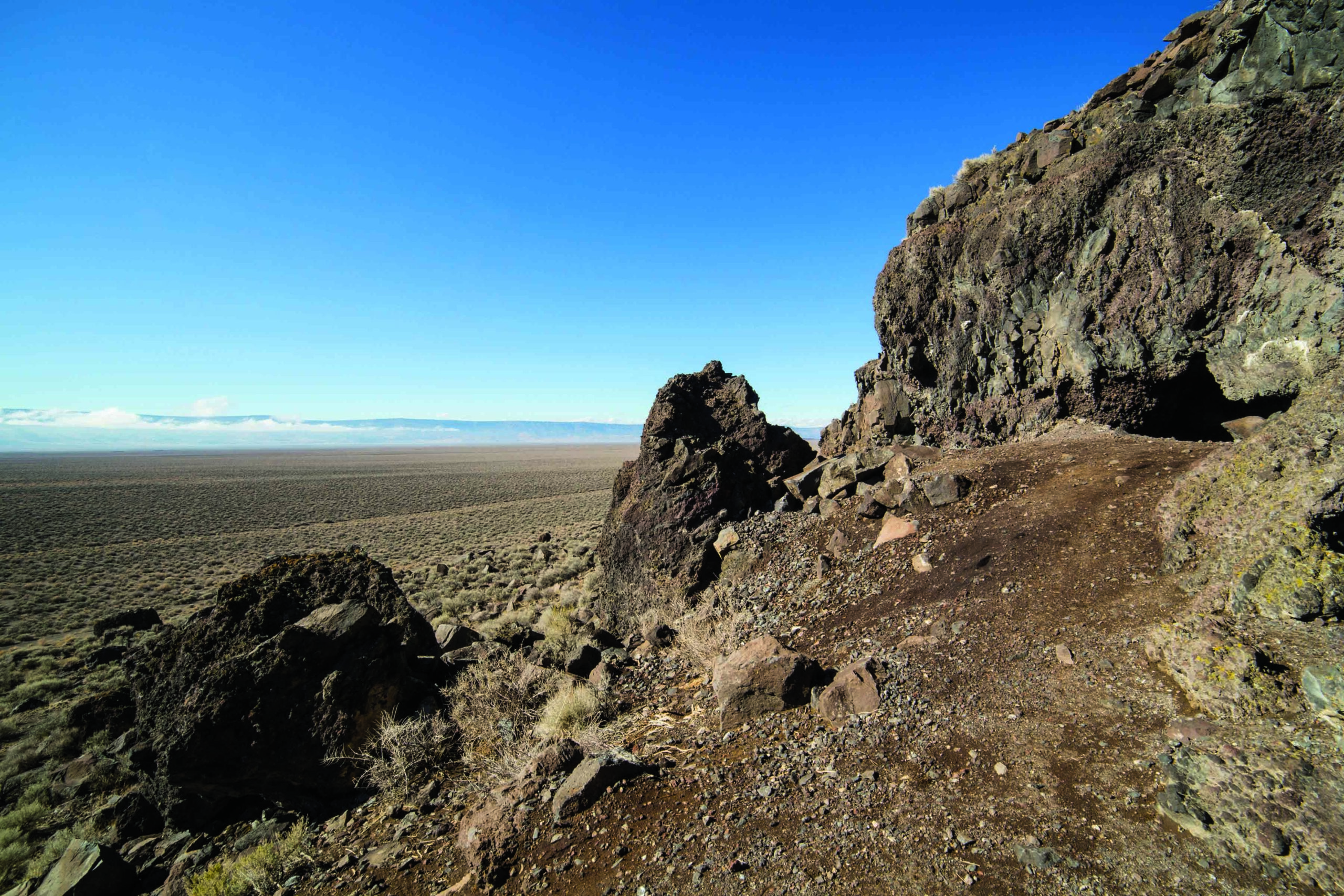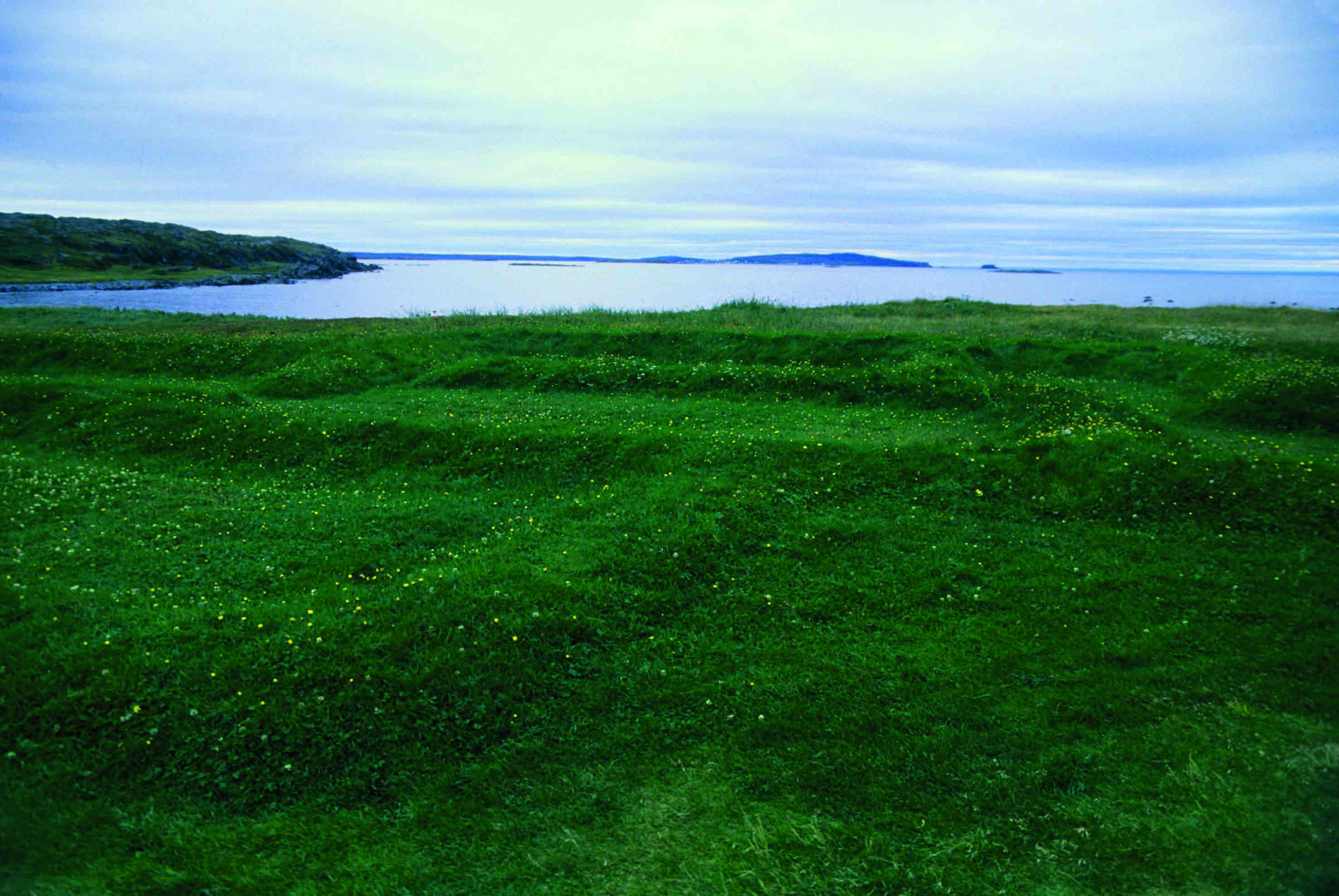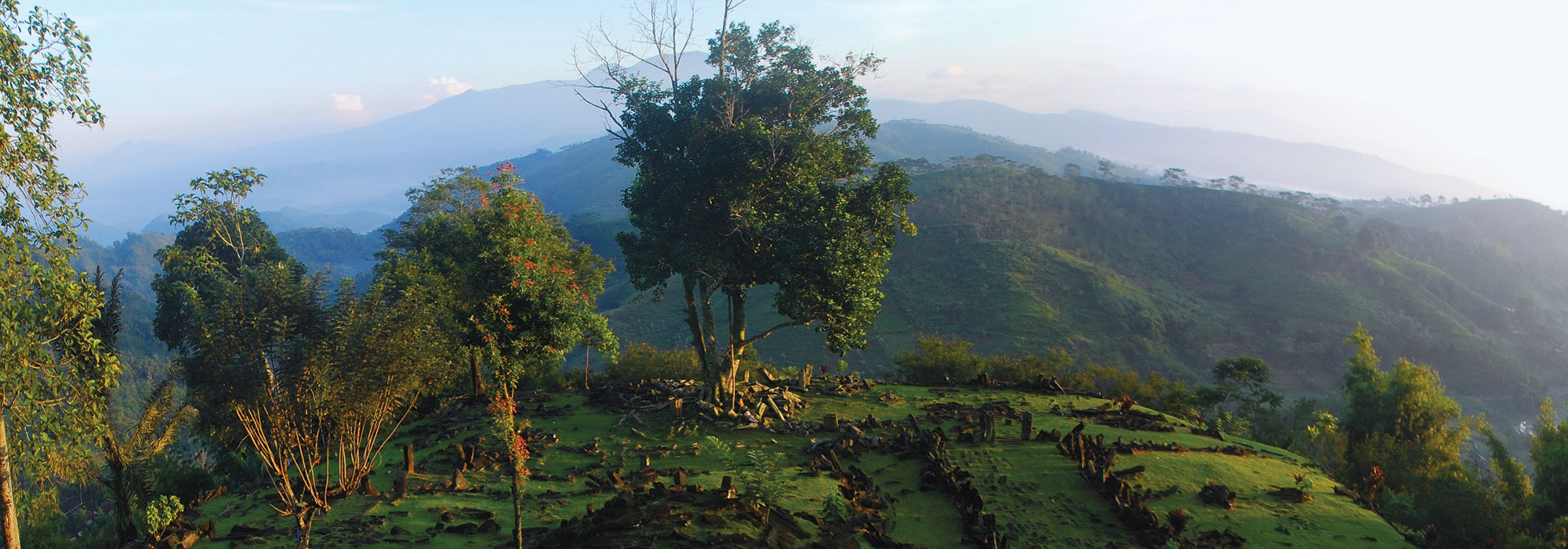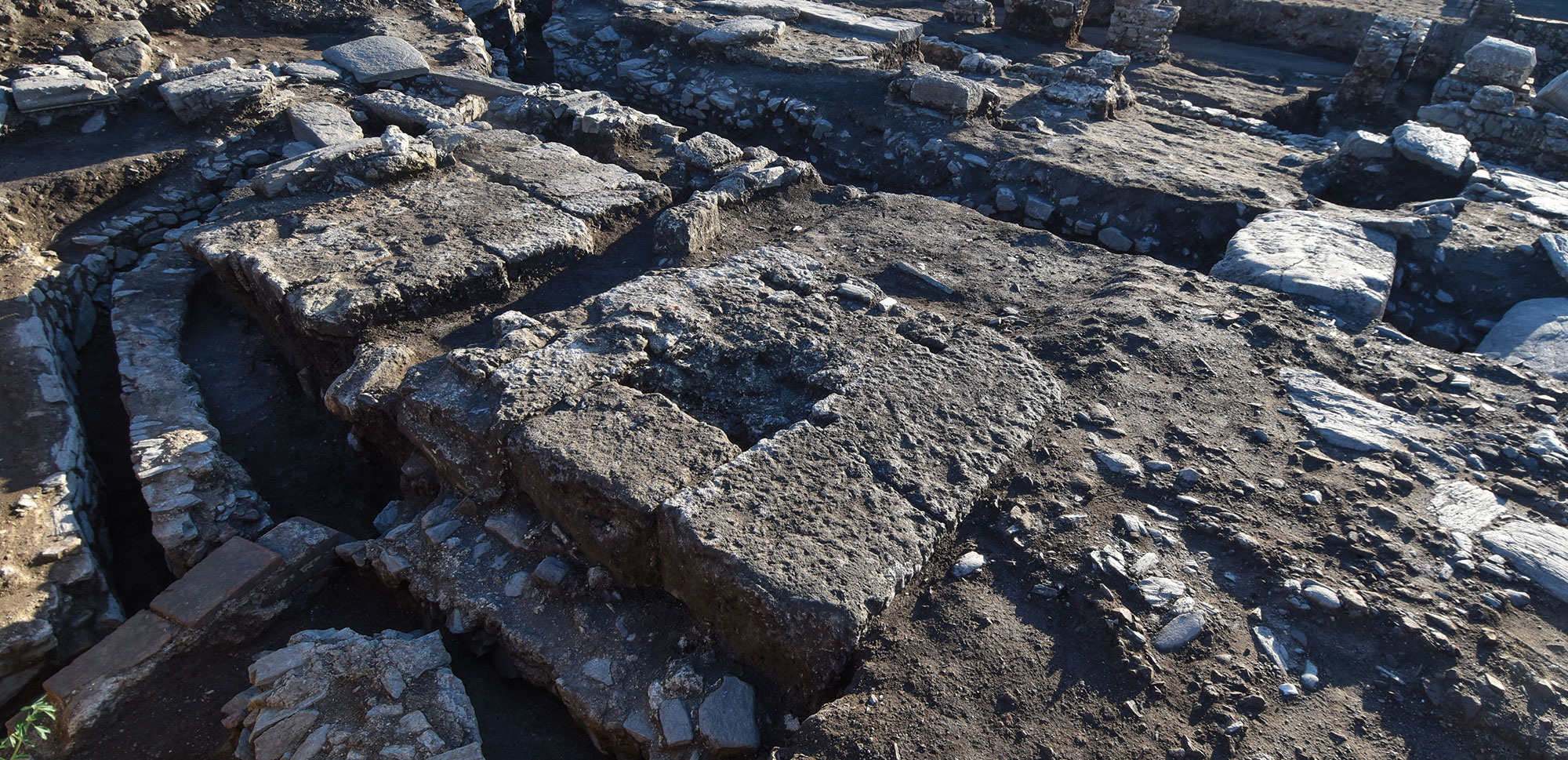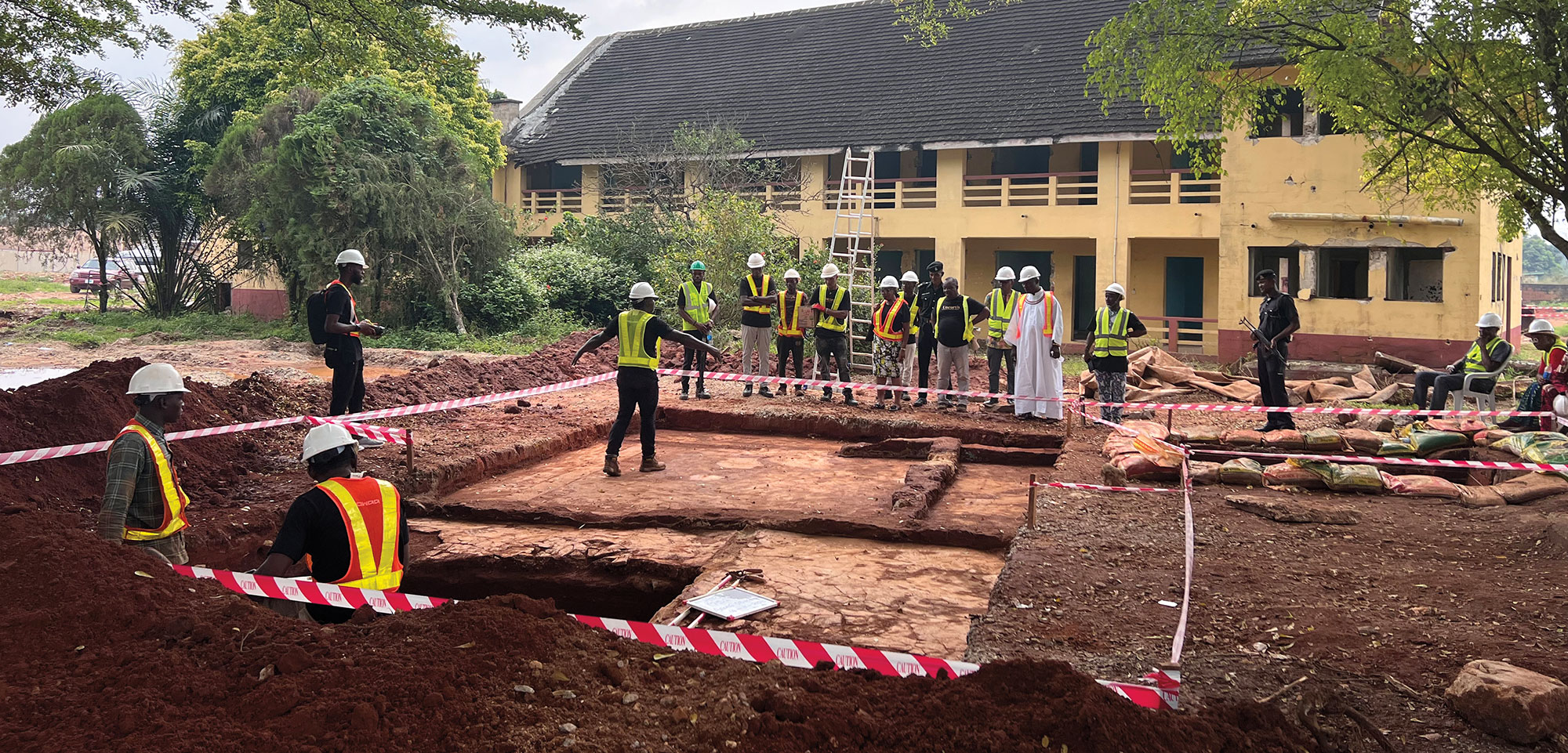The courtyard of a monumental temple known as the Kalasasaya in the first-millennium A.D. city of Tiwanaku in modern-day Bolivia was once the site of rituals that drew pilgrims from across the Andes Mountains.
Around A.D. 600, migrants from across the southern Andes were drawn to a city just south of Bolivia’s Lake Titicaca, the world’s highest large lake, at 13,000 feet above sea level. Founded in A.D. 150, Tiwanaku—a name possibly based on the local Aymara people’s term meaning “s


